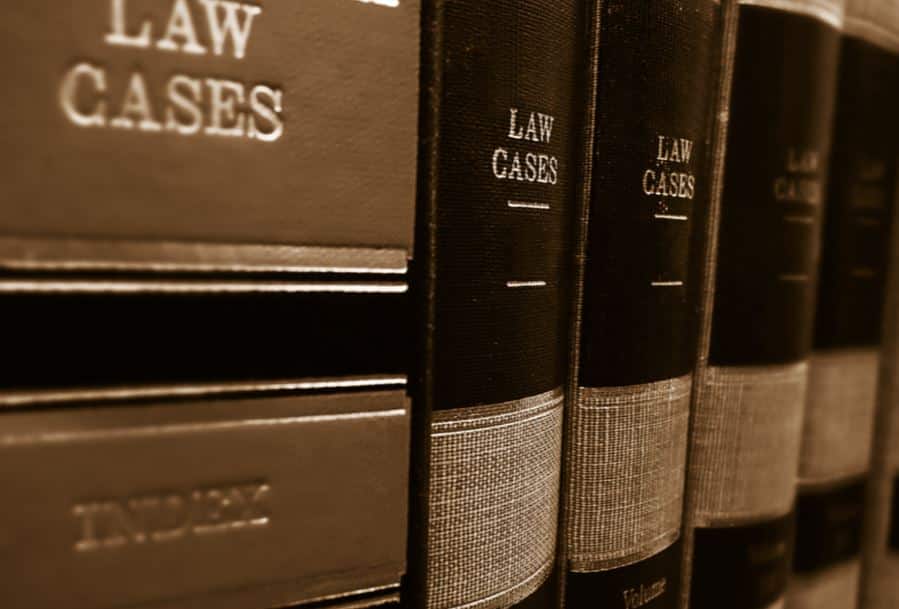O’Connor v The Pennine Acute Hospitals NHS Trust [2015] EWCA Civ 1244 concerned a case of medical negligence. It was recognised in the case that “[i]t is not an uncommon feature of litigation that several possible causes are suggested for the mishap which the court is investigating”.
Facts
The claimant in the case was Ms O’Connor, a patient at the Royal Oldham Hospital, and the defendant was the Pennine Acute Hospitals NHS Trust, the NHS Trust responsible for the Royal Oldham Hospital.
The relevant details of the case are as follows:
- 18 July 2005 – Ms O’Connor underwent a hysterectomy. An “unfortunate, but non-negligent” consequence was that she developed a Vesicovaginal Fistula meaning that she would suffer from incontinence. This required a further operation to repair
- 26 September 2005 – Mr Sharma, a urologist at the Royal Oldham Hospital, operated to repair the Vesicovaginal Fistula. Dr Kenworthy administered the anaesthetic. The operation went as follows:
- The abdomen was cut open and a ring retractor placed on the surface to hold the incision open
- The sigmoid colon was to be removed by dissecting it from the pelvic wall and the vaginal side of the fistula. The operation notes read: “[t]he sigmoid colon was badly stuck to the vaginal side of the fistula”, and so dissection was slow
- After surgery, Ms O’Connor’s left leg was numb and there was a loss of motor function. Tests revealed damage to her left femoral nerve
- 24 January 2006 – Ms O’Connor met with Mr Sharma to check her progress. Mr Sharma sent a letter to Ms O’Connor’s GP claiming:
- Ms O’Connor was no long incontinent and her bladder function was “entirely normal”
- She was still having difficulties with her left leg, which Mr Sharma “apologised” for. He claimed that the only logical explanation of the cause of injury was the difficulty he had in removing the colon from the vaginal side of the fistula
- Ms O’Connor’s femoral nerve improved over time, but the discomfort and difficulty in walking continued
Ms O’Connor brought the case to the County Court on 31 March 2009, claiming medical negligence by Mr Sharma.
Medical Evidence in the Case
Pre-trial collection of evidence went as follows:
- 22/23 September 2011 – neurology experts, Professor Chadwick and Dr Sambrook, agreed that surgical trauma would be the most likely cause of the femoral damage
- 31 October/4 November 2011 – urological experts, Professor Chapple and Mr Desmond, agreed that the surgery was the likely cause, resulting from either: the “pressure” of the retractor or during the dissection itself. They agreed the first was more likely
- 16 January 2012 – pain management experts, Dr Simpson and Dr Bernstein, argued that the anaesthetic block administered caused the damage
- 12 August 2013 – Mr Sharma claimed he used the retractor without deep retraction, meaning he could not have caused the damage through “pressure” from the retractor
- Mr Desmond, following Mr Sharma’s statement, agreed that the retractor could not have caused the injury used in this manner, and so the anaesthetic block must be the cause
- 6 September 2013 – Professor Chapple reconsidered and reported that, since Mr Sharma did not use deep retraction, the retractor would not have caused the injury
- 22 September 2013 – Dr Simpson reconsidered and submitted that the anaesthetic block causing injury is “highly improbable”, and that it is most likely the damage occurred “during the provision of the bilateral rectus sheath and ileo-inguinal blocks”
Oldham County Court
The trial began on 30 September 2013 and ended on 4 October.
The trial began with the Trust applying to call an additional expert witness, primarily on the basis that Dr Simpson had changed her evidence. This application was rejected.
26 November 2013 – after consideration of the case, the judge, Mr Hunter QC, gave judgement in favour of Ms O’Connor, assessing damages in the total sum of £459,758.09. Three conclusions were drawn:
- Mr Sharma did not use deep retraction, and therefore pressure from the retractor did not cause the injury
- The anaesthetic administered did not cause the injury
- Mr Sharma caused the injury to the femoral nerve during the process of dissection, and this constituted negligence on his part
Court of Appeal
On 17 December 2013, the Trust appealed against the decision and the case came before the Court of Appeal on 10 November 2015. There were two grounds for the Trust’s appeal:
Ground 1: The judge erred in refusing the Trust’s application to call an additional expert witness. This ground was dismissed for two reasons:
- Simply because Dr Simpson changed her view slightly did not entitle the Trust to bring in a new expert – it was right that experts should develop their arguments in line with new evidence
- The application was made on the day of the trial. If the judge had agreed, the trial would have been adjourned, leading to delay and massive extra costs
Ground 2: The judge erred in finding that Mr Sharma injured Ms O’Connor’s femoral nerve during dissection. The Trust advanced five different arguments, all of which were dismissed. The three main arguments were as follows:
- The judge misinterpreted Professor Chapple’s evidence. Professor Chapple merely confirmed that an experienced surgeon could damage the femoral nerve during the dissection, and produced medical literature to support this
- The judge erred in attaching significance to Mr Sharma’s letter dated 24 January 2006. The appellate judge suggests the “gist of the letter” is that “he may have caused” the nerve damage. The decision was not based upon this letter, it was only used as supporting evidence
- The judge was not entitled to reject the “anaesthetic explanation” for causing the injury. A range of views on this matter were considered and the conclusion made was based on the supporting evidence
The appeal was dismissed.
Conclusion
This case concerned the potential medical negligence of Mr Sharma when carrying out Ms O’Connor’s Vesicovaginal Fistula. After assessing all of the evidence presented to the court, judgment was given in favour of Ms O’Connor on the grounds that, on the balance of probabilities, it was likely that Mr Sharma did cause the damage to Ms O’Connor’s femoral nerve.
Assessing something on the balance of probabilities essentially means that the court is satisfied that, based on the evidence presented to the judge, the occurrence of the event is more likely to have happened than not. Therefore, in the present case, the court was satisfied that it is more likely than not that the cause of the femoral nerve damage was the occurrence of negligent conduct during the operation Mr Sharma carried out.
Res Ipsa Loquitur
This case also involved consideration as to whether the legal principle of ‘res ipsa loquitur’ should apply or not. Simply, res ipsa loquitur means that: the mere occurrence of some types of accident is sufficient to imply negligence. In the present case, a classic definition of the doctrine was given, cited from the judgment of Earle C.J. in Scott v London & St Katherine’s Docks [1865] 3 H & C 596 at 601: “There must be reasonable evidence of negligence. But where the thing is shown to be under the management of the defendant or his servants, and the accident is such as in the ordinary course of things does not happen if those who have the management use proper care, it affords reasonable evidence, in the absence of explanation by the defendants, that the accident arose from want of care”.
Ultimately, the fact the Trust did not offer any plausible explanation for the claimant’s injury that was consistent with the exercise of due care, did not automatically convert the case into one of res ipsa loquitur. But, the lack of plausible explanation did amount to a material factor in the case which the judge had to consider.
The Trust argued that the “anaesthetic explanation is no more unlikely than the surgical trauma explanation postulated by the claimant”, and that the judge was, therefore, in a similar position to the judge in Rhesa Shipping Co S.A. v Edmunds [1985] 1 WLR 948: he was faced with two “unlikely explanations for the injury”.
However, the judge was entitled to not accept either of the explanations. There can be a number of potential causes for an injury. In Ms O’Connor’s case, there were two potential causes being considered: the anaesthetic explanation and the surgical trauma explanation. Simply eliminating the anaesthetic explanation as the cause of the injury is not sufficient in itself to determine the surgical trauma explanation as the effective cause of the femoral nerve injury: the judge must still be satisfied that it is more likely than not that the surgical trauma did cause the injury.
After considering the evidence, the judge held that surgical trauma during dissection had caused the nerve injury. However, this finding was reached on the balance of probabilities, and did not rely upon res ipsa loquitur. Therefore, simply having multiple causes does not necessarily mean that negligence is presumed to have occurred and does not eliminate the need to prove causation on the balance of probabilities.
Further Reading
From one of the UK’s most read legal blogs.








